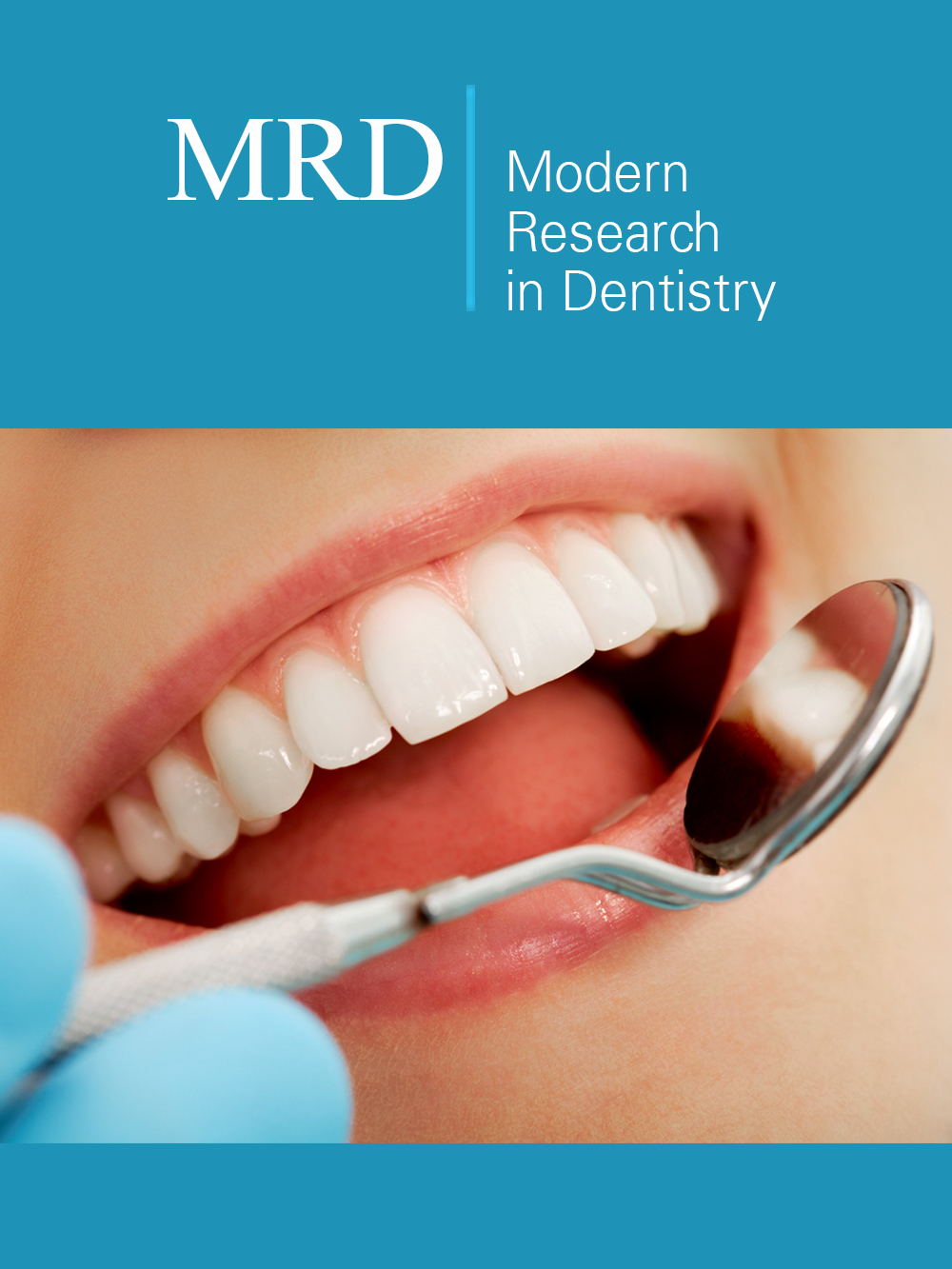- Submissions

Full Text
Modern Research in Dentistry
Dogmas in Oral and Maxillofacial Surgery
Makhloufi Ahmed*
Laboratory of valorization of vegetal Resource and Food Security in Semi-Arid Areas, Algeria
*Corresponding author: Makhloufi Ahmed, Laboratory of valorization of vegetal Resource and Food Security in Semi-Arid Areas, Southwest of Algeria, BP 417, University of Bechar, Algeria
Submission: May 24, 2024;Published: June 05, 2024

ISSN:2637-7764Volume8 Issue1
Opinion
Dogmas: If there is one thing that surgery should not be, it’s dogmatic. However, it is quite common to see dogmatic surgeons. Let’s define dogma. According to the dictionary of the Royal Spanish Academy, it means “a set of beliefs that are indisputable and obligatory for followers of any religion.”
How is it possible for someone to say or propose: “I use this surgical technique, so I will operate in this way...” And we see this a lot in the field of orthognathic surgery. Both orthodontists who are dogmatic, treating all patients with their technique, whether it’s distalization with plates or screws, or orthodontic compensation, and also surgeons who adhere to a particular trend. An example of this can be minimally invasive orthognathic surgery.
No technique is inherently good or bad, its success depends on how it is used. For example, we use a variety of concepts, even instruments designed for minimally invasive surgery, but we recognize that in certain pathologies, such as multifragment surgery of the upper jaw with asymmetrical palatal plane extrusions, a different approach may be more appropriate. We also perform pterygopalatine disjunction following the postulates described by Araoz Alfaro, but we make larger incisions and osteotomies in the chin because we find superior aesthetic results.
The key is to apply critical thinking in the selection process. We daily instruct our residents to be thoughtful. As my mentor, Dr. Eduardo Michael used to say: anyone can operate anything as long as they are next to a surgeon who has done it many times. It’s an art. Not everybody can decide when a particular surgery is necessary.
The question is to apply criteria, experience, and scientific evidence in the selection of the procedure. Artificial intelligence provides us with important assistance in our current lives, and it will do so even more so in the future. Let’s see how it responds when one asks which procedure is superior, conventional or minimally invasive.
Both options have their advantages and disadvantages, so the choice between minimally invasive orthognathic surgery and conventional surgery depends on various factors, such as the specific condition of the patient, the type of surgery required, and the preferences of the surgeon. Minimally invasive orthognathic surgery generally involves smaller incisions, less tissue trauma, and a faster recovery time compared to conventional orthognathic surgery. However, conventional surgery may be more suitable for complex corrections. It is important to thoroughly discuss the available options, as well as the benefits and risks of each approach, with a maxillofacial surgeon before making a decision. (chat gpt4).
It is important that our training as surgeons allows us to choose the right tool, helped for the scientific evidence. As a popular saying goes, if a carpenter only has a hammer, everything will be fixed with nails.
 a Creative Commons Attribution 4.0 International License. Based on a work at www.crimsonpublishers.com.
Best viewed in
a Creative Commons Attribution 4.0 International License. Based on a work at www.crimsonpublishers.com.
Best viewed in 







.jpg)






























 Editorial Board Registrations
Editorial Board Registrations Submit your Article
Submit your Article Refer a Friend
Refer a Friend Advertise With Us
Advertise With Us
.jpg)






.jpg)














.bmp)
.jpg)
.png)
.jpg)










.jpg)






.png)

.png)



.png)






